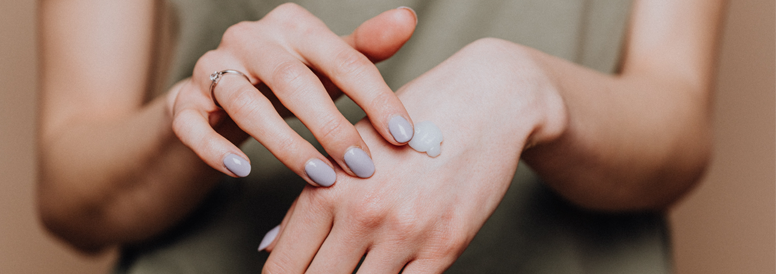Natural Personal Care: The Importance of Going Clean
The average woman uses 168 chemicals on their body every day and destinations like Hawaii are looking to ban due to the negative impact chemicals like oxybenzone are having on their coral reefs. It’s more important than ever to be cautious about what you put in and on your body.
While many of us avoid pesticides in our produce, scrutinize food labels and drink out of glass or steel containers, how would you rate what sits on your bathroom shelves and in your shower? There are over 10,000 unique chemical ingredients that go into personal care products! The government does not require health studies, pre-market safety testing or FDA approval before these products end up in our shopping carts.
While many of our patients don’t readily think of personal care products as a exposure, we know that the skin readily absorbs whatever we rub, rinse, lather or spritz onto it in our daily routines. There are many reasons to make the switch to including the following:
- Plants are rich in antioxidants and vitamins, which have great benefits for the skin.
- Since 1938, no major law has passed to regulate the thousands of products that have been used daily from the consumers. The FDA does not require companies to provide safety data on their products, they don’t test on the safety of personal care products before they are marketed, nor can the FDA force a brand to recall products if unsafe ingredients were used.
- The fragrance industry is by law protected due to trade secret laws, therefore ingredients are not listed on labels. The law is set up to protect the fragrance companies from having to tell you what ingredients they are using.
- Eliminating the brand’s dependency of lab-generated ingredients eliminates the need for animal testing. The ingredients utilized are the safest, and their exact origins are known.
- The and is equipped with enzymes meant to attack unknown chemicals. Every chemical or ingredient has its purpose within the skincare or cosmetics, so, they all act differently once they are absorbed. Some of these ingredients are made toxic by the exact enzymes equipped to attack unknown chemicals.
Below are some common, harmful chemicals you may find in your personal care products:
Parabens: endocrine disruptors with estrogenic activity, intact parabens can accumulate in human breast tissue at levels sufficient to increase the growth of breast cancer cells. Forms: ethyl, methyl, butyl or propyl parabens.Frequently found in: cosmetics, moisturizers, hair care products, shaving products.
Phthalates: endocrine disruptors with estrogenic activity, decrease male fertility, elevated levels found in autism spectrum disorder, endometriosis, pro-atherogenic and pro-senescence effects via severe lipoprotein modification. Forms or common names: diethyl (DEP), diisobutyl, and bis (2-ethylhexyl) phthalates, MEHP, DEHP, note that ‘fragrance’ on an ingredient label likely contains phthalates. Frequently found in: personal care products, in flexible plastics (recent study found phthalates can be absorbed from plastic milk containers with phthalates bound to milk proteins ), perfume, nail polish, adhesives.
Sodium laureth sulfate (SLES) and Sodium Lauryl Sulfate (SLS) are used in cosmetics as detergents and to make products bubble and foam. It is common in shampoos, shower gels, facial cleansers and toothpaste. It is also found in household cleaning products like dish soap. These chemicals are skin, eye and respiratory tract irritants and toxic to aquatic organisms. According to the Environmental Working Group’s Skin Deep Cosmetic Safety Database, SLS is a “moderate hazard” that has been linked to cancer, neurotoxicity, organ toxicity, skin irritation and endocrine disruption.
The take home message is that while parabens, phthalates and SLS are ubiquitous in our environment and pose significant health hazards, it is possible to reduce your exposure by reading labels, minimizing plastics and staying informed. The Environmental Working Group’s online database (www.ewg.org) is the best resource for checking the safety of beauty and personal care products and their ingredients, and is a treasure trove of information and education.
Although many integrative practitioners consider the removal of toxic products a VITAL part of every treatment plan, it can be intimidating to ask patients to make too many changes all at once. Fortunately, you can introduce your patients to a small but complete selection of clean personal care items like , , and , and allow them to try them at their own pace. When patients realize how much better they feel about using these products and taking care of themselves and the environment in this way, they’re likely to make the switch permanent. Wellevate® makes it easy for patients to find and try clean and effective.

